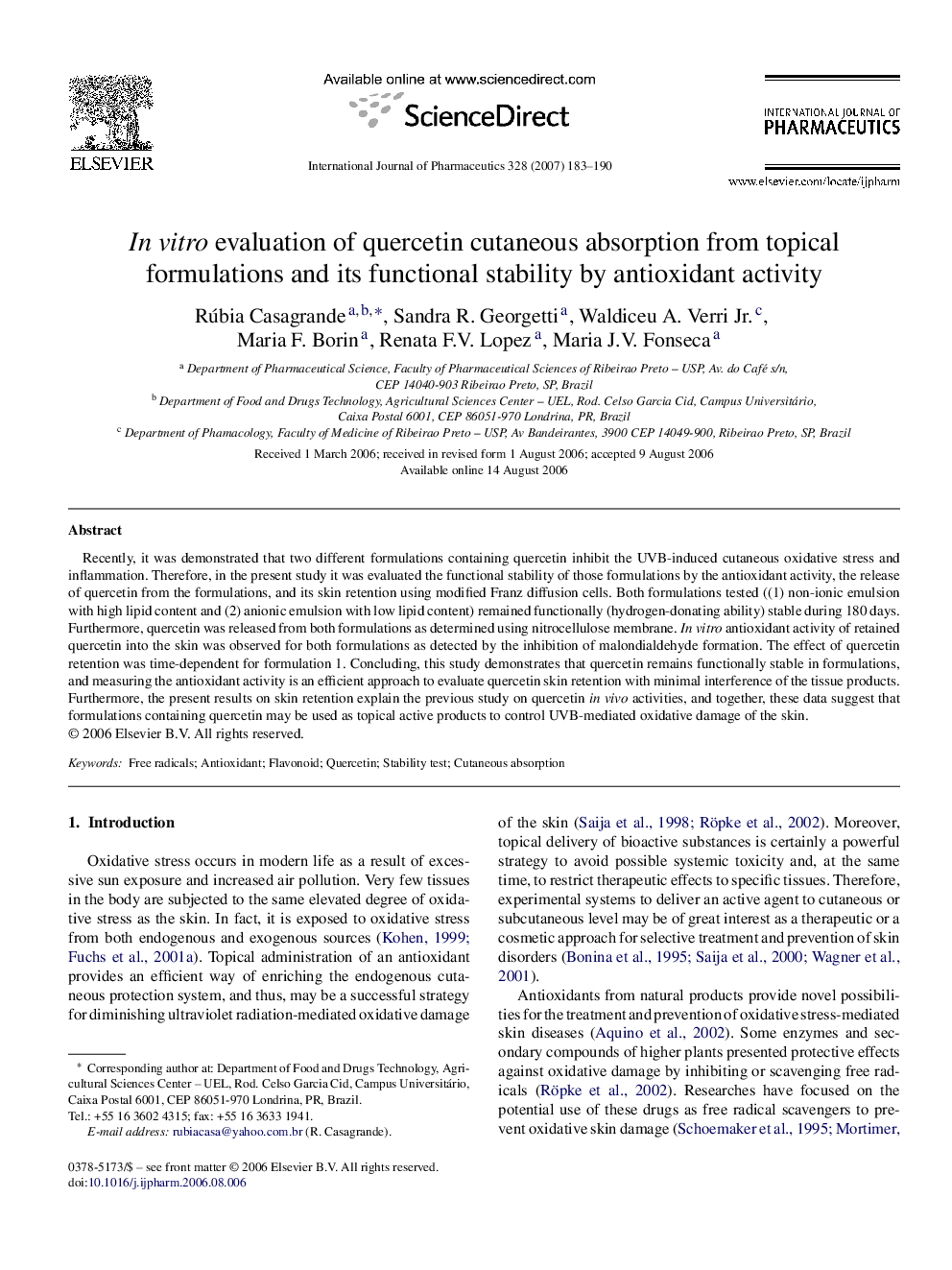| Article ID | Journal | Published Year | Pages | File Type |
|---|---|---|---|---|
| 2506477 | International Journal of Pharmaceutics | 2007 | 8 Pages |
Recently, it was demonstrated that two different formulations containing quercetin inhibit the UVB-induced cutaneous oxidative stress and inflammation. Therefore, in the present study it was evaluated the functional stability of those formulations by the antioxidant activity, the release of quercetin from the formulations, and its skin retention using modified Franz diffusion cells. Both formulations tested ((1) non-ionic emulsion with high lipid content and (2) anionic emulsion with low lipid content) remained functionally (hydrogen-donating ability) stable during 180 days. Furthermore, quercetin was released from both formulations as determined using nitrocellulose membrane. In vitro antioxidant activity of retained quercetin into the skin was observed for both formulations as detected by the inhibition of malondialdehyde formation. The effect of quercetin retention was time-dependent for formulation 1. Concluding, this study demonstrates that quercetin remains functionally stable in formulations, and measuring the antioxidant activity is an efficient approach to evaluate quercetin skin retention with minimal interference of the tissue products. Furthermore, the present results on skin retention explain the previous study on quercetin in vivo activities, and together, these data suggest that formulations containing quercetin may be used as topical active products to control UVB-mediated oxidative damage of the skin.
